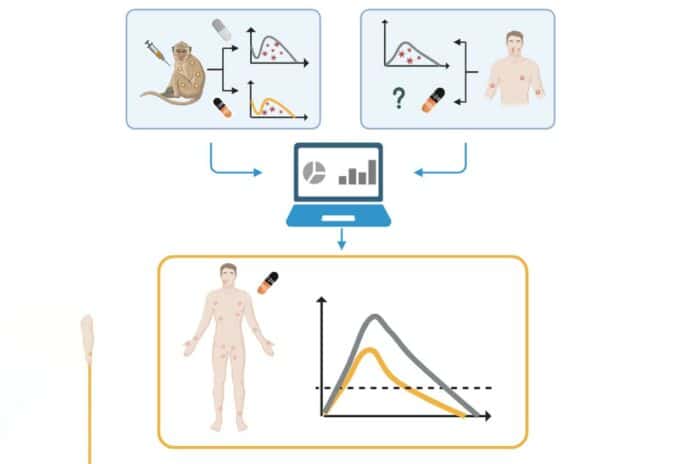MPox, also known as monkeypox, affected more than 80,000 cases worldwide. The virus is transmitted predominantly to humans through direct contact with an infected animal and less commonly between humans. However, in the 2022 outbreak, mpox has been mostly reported among men who have sex with men.
Currently, tecovirimat is the most commonly used antiviral agent for mpox. Tecovirimat demonstrated antiviral solid activity by blocking the VP37 protein in virus maturation and release from the infected cell. Despite using tecovirimat since the beginning of the 2022 outbreak, few data have been published on its antiviral effect in humans.
A new study uses a unique data set in nonhuman primates (NHPs) and humans to predict tecovirimat efficacy. They analyzed tecovirimat antiviral activity on viral kinetics in NHP to characterize its concentration–effect relationship in vivo.
Scientists studied how tecovirimat works against mpox by looking at data from nonhuman primates, healthy volunteers treated with tecovirimat, and untreated patients with mpox. They used this information to predict how different doses of tecovirimat would affect the clearance of mpox in human skin lesions.
They also used a model to project tecovirimat’s effectiveness in humans based on data from healthy volunteers. Additionally, they applied a model to understand how mpox behaves in skin lesions of untreated patients, using this framework to predict tecovirimat’s impact on clearing the virus in skin lesions.
At doses recommended for humans, tecovirimat inhibited viral replication by over 90% within 3 to 5 days of drug administration, reaching over 97% efficacy at a steady state. Considering an estimated basic reproduction number (R0) for mpox within the host as 5.6, tecovirimat could reduce the time needed for viral clearance if administered before the viral peak.
Scientists noted, “We predicted that initiating treatment at symptom onset, which on average occurred two days before viral peak, could reduce the time to viral clearance by about 6 days. Immediate postexposure prophylaxis could not only reduce time to clearance but also lower peak viral load by more than 1.0 log10 copies/mL and shorten the duration of positive viral culture by about 7 to 10 days.”
Journal Reference:
- Nguyen BT, Marc A, Suñer C, Marks M, Ubals M, Hernández-Rodríguez Á, et al. (2023) Early administration of tecovirimat shortens the time to mpox clearance in a model of human infection. PLoS Biol. DOI: 10.1371/journal.pbio.3002249
